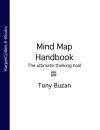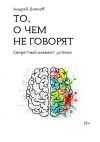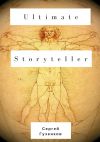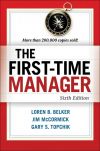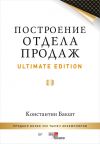Правообладателям!
Представленный фрагмент книги размещен по согласованию с распространителем легального контента ООО "ЛитРес" (не более 20% исходного текста). Если вы считаете, что размещение материала нарушает ваши или чьи-либо права, то сообщите нам об этом.Читателям!
Оплатили, но не знаете что делать дальше?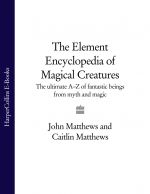
Текст бизнес-книги "The Element Encyclopedia of Magical Creatures: The Ultimate A–Z of Fantastic Beings from Myth and Magic"
Автор книги: John Matthews
Раздел: Жанр неизвестен
Текущая страница: 3 (всего у книги 7 страниц)
ADARO
This strange being appears in the myths of the Solomon Islands in the western Pacific Ocean. He is clearly related to the merman, but unlike these familiar sea creatures, the Adaro has legs, attached to which are fins; a larger fin, similar to that of a shark, sprouts from his head. He also has fish gills and a sharp horn where his nose ought to be. The Adaro commands a huge army of flying fish, which savagely rend into pieces anyone foolish enough to invade his waters. The Solomon Islanders describe him as flying through the air, carried by his fish army or riding on the back of a rainbow during storms at sea. (See also Triton.)
ADITI
In Hindu tradition, Aditi is the primordial entity from which all things come. She is shown in the form of a cow who nourishes every living thing. She gives her milk freely to all on the condition that humans behave to her as if they are her calves, like children to their mother. The injunction ‘Do not injure Aditi the Cow,’ is a warning to protect the whole of nature and the Earth itself.
ADLET
These monstrous creatures feature in the mythology of the Inuit people of Labrador and the Hudson Bay area. They are part of a curious creation myth, according to which a human woman cohabited with a red dog. Five of the children resulting from this union were dogs themselves, and these were sent across the sea to Europe where they founded the European races. Five other children were even more monstrous and turned upon the Inuit themselves, drinking their blood and rending them limb from limb. Among the neighbouring people of Baffin Island and Greenland, the same or similar creatures are know as the Erquigdlit.
AELLO
One of the Harpies of classical Greek and Roman myth.
AETERNAE
According to the legends that surround the life and deeds of Alexander the Great, the Aeternae were encountered on the northern plains of India when his army passed that way in the 4th century BC. They were described as having bony, saw-toothed protuberances sprouting from their heads, with which they attacked and wounded their enemies. They killed several of Alexander’s soldiers who were unlucky enough to encounter them.
AETOLIAN BOAR
Also known as the Calydonian boar, this mighty beast appears in classical Greek mythology as a means of inflicting divine justice. The goddess Artemis sent the boar as a punishment to the people of the Aetolian region of Greece, who had failed to give her sufficient honour and sacrifice. After the boar had ravaged much of the country, the hero Meleager was given the task of hunting down and destroying the creature. Calling upon many of greatest heroes in the classical world, Meleager lead them on a long and savage hunt across the country. In the end, it was the huntress Atalanta who brought down the boar with an arrow, after which Meleager killed it with his spear. He then gave the prize of the carcass to Atalanta, but this caused a quarrel over the division of the spoils and in the ensuing battle Meleager himself was slain. (See also Boar, Beigad, Boar of Ben Bulbain, Buata, Cafre, Calydonian Boar, Erymanthean Boar, Pugot, Sacrimnir, Twrch Twrch, Ysgithrwyn.)
AFANC
A water monster found specifically in Welsh folklore tradition. Also known as the Addanc or Abhac, it preyed on unwary travellers. Early references, dating back to the Middle Ages, are vague about its shape and size, but later it came to be described as a giant beaver. The reason for this may be that the name Afanc comes from a local dialect word for beaver. On the river Conway in north Wales there is a whirlpool known as Llyn yr Afanc, and local stories tell of the capture of the monster, which was bound by iron chains and dragged from its home to a lake, Llyn Cwm Ffynnon.
The creature is also associated with Lake Bala, where a version of the Noah’s Flood story is told. A man named Dwyfan suspected that the monster was going to cause a flood and built an ark to house all the animals he could find. The flood did indeed come, caused by the thrashing of the Afanc. Dwyfan and his wife Dwyfach were the sole survivors and they founded the British race. This story probably originated in the flash floods for which the area is famous. Later, it was said that the Arthurian hero Peredur (Percival) slew the Afanc in single combat, but stories were still told of it as late as the 19th century. In one of these, the setting is Llyn Barfog (the Bearded Lake), where, in an echo of the Unicorn story, the Afanc is captured after it is lulled to sleep by the singing of a virgin. It is then chained and dragged away to a deep lake where it still lies. Another such story refers to the mythical hero Hu Gadarn, who captures the beast and drags it from the lake with his team of mighty oxen. The Afanc is probably related to the Scottish kelpie and the Manx glaistyn.
AFRIT/AFREET
A tribe of monstrous demons or djins found in Muslim and Arabic folklore. Described as gigantic in form, sometimes with cloven hooves and horns, it may well have added details to the description of the Devil in Christian mythology. Incredibly fierce and cruel, the Afrits stole unattended children and dragged them to their deaths. They were feared throughout the Muslim world. Usually found in desert lands, the people of Kenya spoke of them inhabiting muddy pools and shallow rivers, from which they leapt out without warning. According to biblical tradition, King Solomon once bound an Afrit with magic, and forced it to help him find the Shamir. Lord Byron, who travelled widely in the Middle East, was so fascinated by the stories of the Aftrit that he included one in his poem ‘The Giaour’.
Go – and with Gouls and Afrits rave; Till these in horror shrink away From Spectre more accursed than they.
AGATHODEMON
A winged serpent from classical Greek and Gnostic traditions. It is especially associated with bringing good luck, and offerings of wine were made to this being to ensure good harvest of the vines. In later Greek tradition, small temples were set up to the Agathodemon, which at this point was now seen as a snake. In some Gnostic sources, Agathodemon is sometimes shown as Aion, the bearer of the zodiac of time, with a lion’s head and man’s body.
AGLOAOPHEME
The name of one of the Sirens in Greek and Roman mythology.
AGUANE
Female fairies living among the Austrian Alps, in northern Italy and the borders of Slovenia. They are shapeshifters but their true form is that of a beautiful young woman with long hair and either goat’s or horse’s feet. They are particularly known as guardians of rivers and mountain streams, and it is advisable to ask their permission before setting foot in any such water. If a man enters the water and stirs up the mud of the stream-bed, the Aguane may come forth and attack him. While they have been known to eat human beings who trespass in their waters, they are also known to be fond of children, whom they carry on their shoulders across rivers.
AGUNUA
In the Solomon Islands of Melanesia, the creators of life were the Figonas. The greatest Figona was Agunua who created a male child, but he was so helpless, Agunua made a woman to make fire, cook and weed the garden. Another Figona was the great cosmic serpent Hatuibwari, who features in the traditions of the San Cristobel Islanders of Melanesia.
AHI
Represented as either a dragon or a vast cosmic serpent in the Vedic myths of ancient India, the Ahi was so huge that in some versions of the myth it is described as drinking all the waters of the Earth, after which it curled itself around the peaks of a great mountain range. The god Indra found it there and slew it, causing the waters to run free again. It is probable that this story reflects the period in winter when the waters are frozen, to be released again with the coming of spring. The Ahi is sometimes connected with Vrtra since both withhold water, steal women and cows, and endanger fertility.
AHUIZOTL
The Ahuizotl appears in the folklore and legends of Mexico. So terrifying was this creature that even to see it was to invite death. It is usually seen as a flesh-eating creature that takes the form of a dog, but with the feet of a monkey and a human hand growing at the end of its prehensile tail. Its name means ‘water opossum’, and it lies in wait for fishermen in the waters and along the banks of rivers. It has a number of tricks by which it catches people, including making small fish and frogs leap about in the water to attract the attention of would-be fishermen. The Ahuizotl then reaches out with the hand at the end of its tail, and drags its victim beneath the water. Within three days, bodies are found floating, and are recognized as victims of the Ahuizotl by the fact that their eyes, teeth and nails are missing – these being delicacies to the monster.
AI APAEC
The supreme deity of the Mochicr people of southern coastal Peru. He takes the form of an ancient man with long pointed fangs and the whiskers of a cat. An anthropomorphized feline god once worshipped in the north of the country, Ai Apaec is one of those gods who are known as the teachers of mankind, bringing the skills of farming, fishing, hunting, music and medicine to the people. He also presides over birth and his court included a lizard and a dog. He is represented on the four-faced pottery vessels made by the people of northern Peru as a human being with the face of the cat on the back of his head; the cat’s face has the eyes of a god.
AI TOJON
A giant two-headed eagle that perches on the top of a mountain and sheds light over the world in the folklore of the Yakut peoples of Siberia.
AIATAR
A creature resembling a giant serpent or snake found in Finnish folklore. Known as the ‘Devil of the Woods’, this creature is said to suckle small snakes. These snakes can cause sickness in the person who sees them. In some areas of Finland, especially along the edge of the Arctic tundra, the Aiatar is seen as a destructive female force that brings bad luck to all who encounter it.
AICHA KANDIDA
A predatory water demon or Afrit of Moroccan folklore which lurks along the banks of the River Sebu, around the Aquadel at Marrakesh, and even in the grounds of the Sultan’s palace in the same city. She appears as a beautiful young woman who lures lonely men to their death. Once her victim is within reach, she transforms into a gigantic monster and drags her victim away to consume him beneath the water. The only way to escape her is to find another human being or an inhabited dwelling, since the Aicha Kandida is apparently able only to attack one person at a time. Occasionally she will relinquish her prey if bribed by a sufficiently generous gift.
AIDA HWEDO
The great Rainbow Serpent of Dahomy mythology.
Aida Hwedo carried the creator Mawu from place to place as she went about creating the Earth. Whenever they stopped for the night, in the morning there were mountains – the piles of excrement left by Aida Hwedo. When the creation was completed, Mawu realized that there were too many large objects on the surface of the Earth and that it was likely to break apart as a result. So she brought Aida Hwedo and commanded him to coil around the inside of the earth’s crust. To prevent the serpent from being overcome by the heat, Mawu placed the sea around him to cool his skin. However, if he gets too hot and shifts in his place, he causes earthquakes. Aida Hwedo lives on a diet of iron bars, but when these are exhausted he will begin to swallow his own tail, at which point the world will be destroyed.
Belief in the rainbow serpent survives in both Surinam and Haitian Voodun belief, and great efforts are made by these people to ensure that the creature is never angered. Thus, before young people marry, if either of them is devoted to Aida Hwedo, they make special offerings to prevent jealousy or resentment in the god.
AIGAMUXA
In the mythology and folklore and of the Khosian people of South Africa, the Aigamuxa are man-eating ogres who inhabit the dunes of the Kalahari desert. Though human in appearance, they have eyes in their instep or in the heels of their feet, so that they are constantly forced to stop and lift a foot in order to see where they are going. Despite the fact that they appear human, they are huge in stature with gigantic hands and feet and enormous sharpened teeth. Whenever they catch human prey, they tear them in pieces and devour them. However, like most ogres, there are very stupid and easily tricked. One story tells how the trickster god Jackal was being pursued by a troop of Aigamuxa. Jackal scattered tobacco dust in his wake, which irritated the eyes of his pursuers and enabled his escape.
AILLEN TRECHENN
A three-headed monster that emerged every Samhain (Hallowe’en) from a mound at Cruachan in County Roscommon to ravage Ireland. It hated all human beings, especially the heroes of Emain Macha and the ancient stronghold of Tara. It was eventually killed by the poet and warrior Amairgen.
AION
The lion-headed god of time in classical Greek and Gnostic traditions. Sometimes shown with four wings or arms (representing the fourfold division of time) or standing on a globe encircled with the signs of the zodiac (representing his reign over the year and the ages). He carries two keys, which unlock the two solsticial gates – a silver key opens the Gate of Cancer and a golden one of the Gate of Capricorn. These gates lead beyond the circle of ordinary time into the infinite realm of the soul.
AIRAVATA/AIRAVANA
In the Hindu mythology of India, Airavata is one of sixteen giant white cosmic elephants who support the Earth on their backs. Airavata stands at the eastern quarter of the world with the god Indra upon his back. The name Airavata comes from the word iravat meaning ‘Child of the Water’. According to Hindu mythology, this wondrous beast was created from the churning of the waters at the beginning of time. He takes the form of a milk-white elephant with wings and was so beautiful that Indra chose him as a personal war elephant. As Airavata flew through the air, he sucked up all the waters from the Earth and sprayed them over the surface to bring the gift of rain to the human race.
Airavata is also seen as the father of all elephants and initially his many children were also winged; they subsequently lost the ability to fly after interrupting a class being taught by a sage after landing in a tree above him. The sage decreed that henceforward they would serve mankind in whatever way they were required. To this day, white elephants, which are extremely rare, are considered to be descendants of Airavata and as such are reserved for the use of royalty, often being given as gifts between kings. The origin of the term ‘White Elephant’ probably originates here, since the beasts in question were valuable but could not be used in any other way.
In the great Hindu mythological epic Mahabharata, a different origin is described for Airavata. Here we are told how the god Brahma took a cosmic egg and opened it, holding one half in each hand while chanting seven mantras over them. From the right-hand shell came eight pure white male elephants, each with four tusks; the chief among these was Airavata. From the left-hand shell emerged eight pure white female elephants. Together these sixteen cosmic creatures stood at the eight cardinal compass points to support the Earth. This idea almost certainly influenced the writer Terry Pratchett, who describes four elephants holding up the Discworld in his series of novels of that name.
AITVARAS
In Lithuanian folklore, the Aitvaras is a creature whose natural form is that of a dragon, but which also takes on other forms including those of a black cockerel or a black cat. It is a type of luck-bringer, of which there are numerous instances in European folklore. Often, a person will bring it home unknowingly, and once there it takes up habitation and begins to work on behalf of its new owner. The Aitvaras’ one objective is to bring well-being and plenty to the house in which it lives, but it usually does this by robbing neighbouring houses. In return, it demands only the sustenance of an omelette every day, but the household suffers the worst side of the bargain since in time it will take the souls of everyone there.
One story tells of a recently married woman who was mystified by the way in which her husband’s corn store never seemed to run dry. Eventually, she took a consecrated candle and went out at night to explore the barn. There she found the Aitvaras, in the shape of a black cockerel, disgorging endless amounts of grain. When it saw her and felt the power of the candle, it flew into the air and vanished, never to be seen again. The woman survived but her husband had already signed away his soul. The earliest reports of this evil creature come from an account of 1547, when a man was investigated for a sudden and unexpected increase in his wealth. It was revealed that he had signed a pact with the devilish Aitvaras, pledging his soul in return for wealth.
AJA EKAPAD
In Hindu Vedic tradition, this one-footed goat was the symbol of swiftness because it was the force of lightning itself and hit the Earth in a single place with the ferocity of its kick.
AKER
The god of the Earth in Egyptian mythology. Aker is represented as a narrow strip of land with a human or lion’s head at either end, or sometimes as two lions back to back and joined in the centre. One lion faces the west where the sun rises, the other faces east where the sun sets. The two lions or lion-headed beings are almost certainly the same as those who guard the entrance and exit to the underworld in this tradition.
AKHEKHU
A strange beast described by medieval travellers to the Middle East, the Akhekhu resembled a serpent, but had four powerful legs and clawed feet. It almost certainly derives from the folklore of Egypt. It is similar to the Griffin.
AKHLUT
A gigantic killer whale mentioned in the folklore of the Inuit, especially those who live along the Bering Sea coastline of Alaska. While its home is the sea, it takes on the form of a giant white wolf in order to prey on humans. Inuit who see large wolf tracks ending suddenly at the edge of an ice floe refer to these as the ‘tracks of the Akhlut’.
AKUPARA
In Hindu mythology, this is the name of a giant cosmic tortoise that supports the entire Earth on its back.
AL
Al is a terrible fire-eyed demon from Armenian mythology. Originally a demon which carried diseases, the Al is now associated with ill-luck in childbirth. It is said to blind unborn children in the womb and cause miscarriages. It also steals seven-month-old children. As well as its fiery eyes, it has snake-like hair, fingernails of brass, iron teeth and it carries a pair of iron scissors with which it cuts the umbilical cord of its chosen victim, inflicting poison on both mother and child. To shield themselves from its evil influence, pregnant women surround themselves with iron weapons that keep it at bay. The Al have a king who is chained in a hidden abyss, from which he can be heard shrieking constantly. In Afghanistan, the creature is represented as a young woman with long teeth and nails. Her feet are reversed.
ALAN
A species of bird-like humanoids with wings, long teeth and hands and feet facing backwards. In the folklore of the Tinguian people of the Philippine Islands, they inhabit the jungles. At night they nest in trees, hanging upside down from the topmost branches like bats. There are also said to have homes beneath the ground that are lined with gold. They are most often represented as helping spirits who give aid to the heroes of the islands; however, at times they can be both mischievous and malicious.
ALBASTOR
A gigantic creature from the folklore of the Cheremis people of eastern Russia. On the ground, it can take the shape of any animal, but it is most often described as a giant, white-skinned man with long flowing hair. It can also fly through the air, at which time it takes on the appearance of a shooting star with a comet-tail of light behind it. Its origin is said to be the souls of baptized and illegitimate children. It punishes people who overindulge in sexual intercourse by providing them with such voracious sexual appetites that they eventually die of exhaustion. It often mates with humans and signs of this may be betrayed by the presence of a sore on the victim’s lips. The human lover of a woman who has lain with an Albastor will also become ill. It can be defeated in two ways: first by breaking the little finger of its left hand; secondly by placing crosses at doors and windows to prevent it entering the house.
Правообладателям!
Представленный фрагмент книги размещен по согласованию с распространителем легального контента ООО "ЛитРес" (не более 20% исходного текста). Если вы считаете, что размещение материала нарушает ваши или чьи-либо права, то сообщите нам об этом.Читателям!
Оплатили, но не знаете что делать дальше?